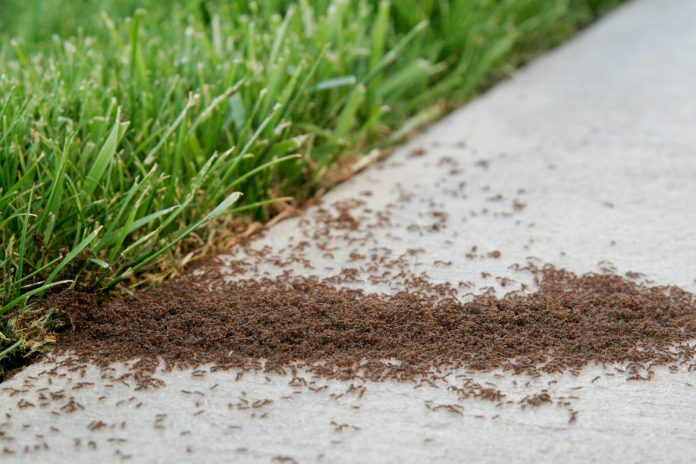The Pacific Northwest is famous for its beautiful forests, cool coastline, and misty mornings. But the same weather that makes the region so lovely also makes it the perfect home for ants. If you’ve ever spotted ants marching across your kitchen or setting up shop in your backyard, you can thank the Pacific Northwest climate for giving them exactly what they need to thrive. Understanding how the weather affects ant colonies and how a pest control company in Redmond can help is the first step in keeping these pests under control.
Why Ants Love the Pacific Northwest
Ants are ectothermic, meaning their body temperature and energy levels are controlled by the outside environment. The mild, wet climate of the Pacific Northwest gives ants a big advantage when it comes to staying active, building nests, and growing their colonies.
Temperature and Humidity
The Pacific Northwest is known for its mild temperatures and steady humidity. Most ants prefer temperatures between 77 and 95 degrees Fahrenheit not too hot and not too cold. In this perfect temperature range, ants are busy foraging for food, caring for their colonies, and even growing their nests larger.
The steady rainfall and damp conditions are just as important. Ant species like carpenter ants, moisture ants, and Argentine ants love moist environments. Wet wood, soft soil, and lush gardens provide the ideal spots for them to dig tunnels, build homes, and find food.
Seasonal Changes
Ants in the Pacific Northwest don’t have to deal with harsh winters like ants in other parts of the country. Winters here are usually mild, so ants stay active longer. Instead of falling into deep hibernation, many ant colonies keep foraging during the colder months, just slowing down a little bit instead of stopping completely.
This longer active season helps ants grow larger colonies faster and gives them a better chance to survive from year to year.
How the Pacific Northwest Climate Shapes Ant Behavior
The weather doesn’t just help ants survive it actually changes how they behave. Everything from where they build their nests to how far they travel for food depends on the weather.
Nesting and Foraging Habits
Because of the region’s constant moisture, there’s no shortage of places for ants to call home. Carpenter ants love burrowing into damp wood, creating smooth tunnels called galleries inside trees, stumps, or even the wooden beams of your house. Other species set up nests in the soil, under rocks, or even inside walls.
The mild temperatures also give ants longer days to forage. Since it rarely gets too hot or too cold, ants can be active for more hours each day, searching for food and water without worrying about extreme weather slowing them down.
Colony Growth and Spread
Thanks to the Pacific Northwest’s friendly climate, ant colonies don’t just survive they expand. Some species, like the invasive European fire ant, have taken over large areas, outcompeting native ants and spreading quickly into parks, yards, and neighborhoods.
Even native ants can become a nuisance. With so much food and shelter available, it’s easy for colonies to grow big enough to cause problems inside homes and businesses.
What Happens When the Climate Changes?
As the climate warms and weather patterns shift, ant behavior may change too. Warmer temperatures could lead to even longer foraging seasons, bigger colonies, and more frequent infestations. However, extreme weather events, like sudden freezes or droughts, could also stress ant populations and shift where they can live.
How to Manage Ant Problems in the Pacific Northwest
Living in the Pacific Northwest means you need a good plan to deal with ants, especially with a climate that helps them thrive. Luckily, there are steps you can take to keep them under control.
Simple Tips for Ant Control
- Reduce moisture around your home by fixing leaks, cleaning gutters, and using dehumidifiers indoors.
- Seal entry points by caulking cracks, fixing screens, and installing door sweeps.
- Clean up food and spills quickly, and store pantry items in airtight containers.
- Trim vegetation away from your home’s foundation and remove debris like old woodpiles.
- Keep your yard tidy, picking up fallen fruits, trimming bushes, and maintaining a dry barrier around your home.
If ants are already invading, early action is key. Setting up bait stations, removing nests, and using eco-friendly repellents can help stop small problems before they grow into big infestations.
Final Thoughts
The Pacific Northwest’s mild, moist climate creates the perfect environment for ants to flourish. While ants are an important part of nature, nobody wants them taking over their home. By understanding how the weather affects ant colonies and by taking a few smart steps you can keep your home protected and enjoy all the beauty the Pacific Northwest has to offer without the unwelcome ant guests.








